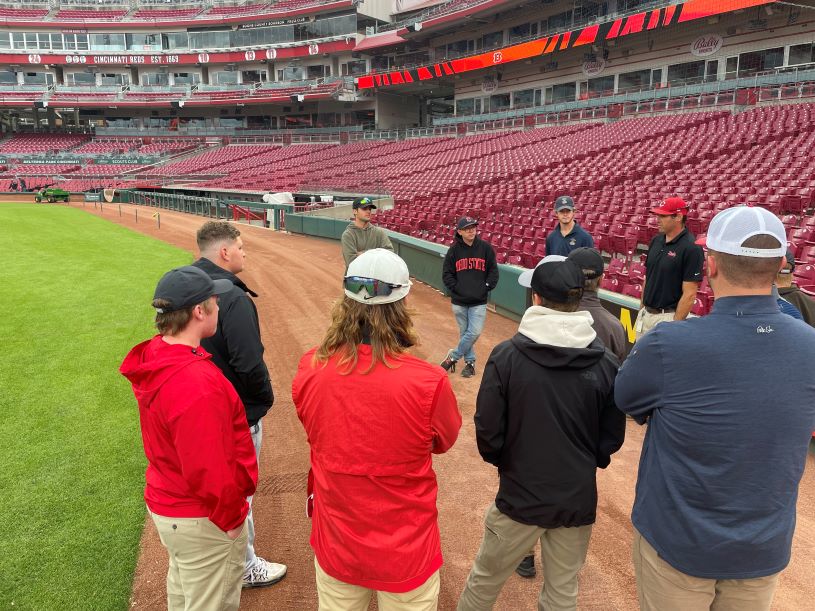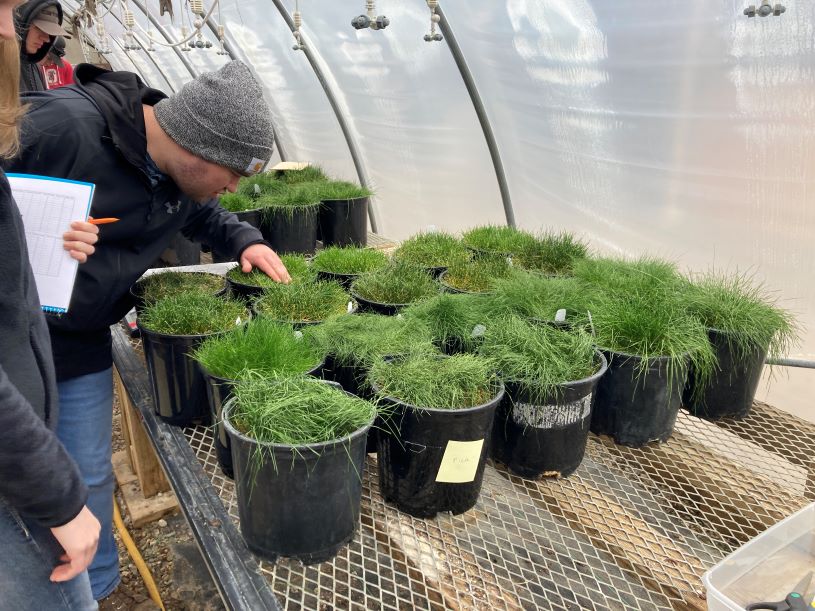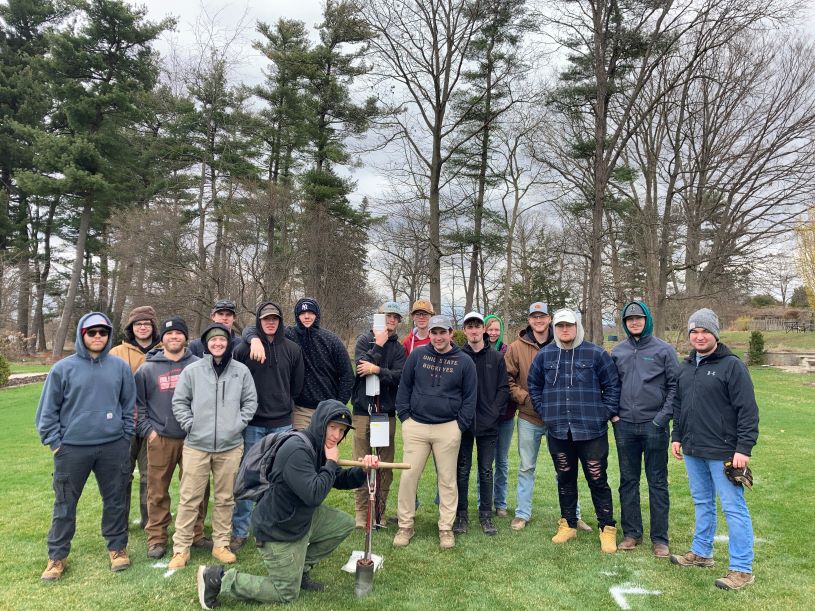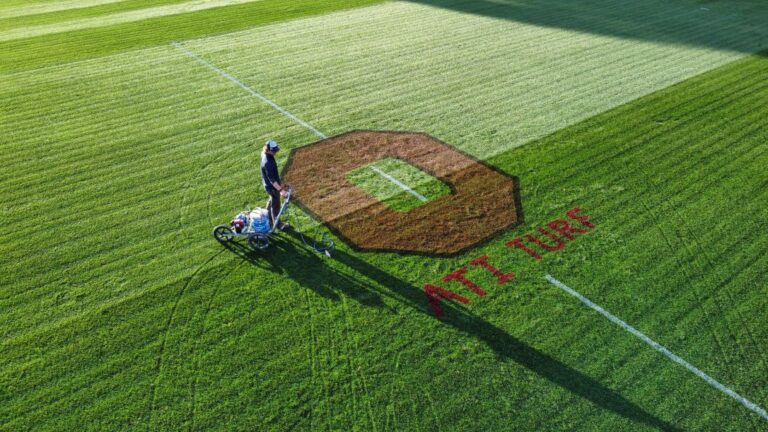The following is the next in our series delving into colleges and universities that offer programs devoted to turfgrass management, turfgrass science, and related disciplines. In this edition, we examine the turfgrass program at The Ohio State University.
The Ohio State University
The Ohio State University (OSU) offers a four-year Turfgrass Science specialization within its Sustainable Plant Systems major, as well as a two-year Turfgrass Management degree program at the OSU Agricultural Technical Institute (ATI) in Wooster, Ohio (about an hour north of OSU’s main campus in Columbus, Ohio).
According to Dominic Petrella, Ph.D., assistant professor and program coordinator, Turfgrass Management program, OSU ATI, the ATI program offers two different degree options: “One is the associate of Applied Science in Turfgrass Management,” said Petrella. “Those are students who come here, get the two-year degree, and leave to go directly into the industry. Then we have a two-year degree that is an associate of Science, for students who plan to go to Columbus and get a four-year degree.”
Petrella added that students at ATI get hands-on experience mowing, grinding reel mowers, fertilizing, calibrating fertilizers, operating GPS sprayers, delving into precision turfgrass management. “We obviously can’t cover everything, but we try to get a really well-rounded student in two years,” he said.
ATI is also in the process of building a soccer pitch on campus and a 3- to 4-hole golf facility that the students will maintain start to finish.
Currently there are approximately 10 students pursuing the four-year Turfgrass Science specialization at The Ohio State University main campus, and another 19 students in the Turfgrass Management program at ATI.

“One challenge we have is that it’s very difficult to get into OSU Columbus as an incoming freshman,” said Doug Karcher, Ph.D., professor and chair of the Horticulture and Crop Science department at OSU. “The average ACT score has been 28 to 29 during the past couple of years. That’s limiting our ability to recruit new freshmen.”
Karcher added that his department is working to address the issues with student numbers in the four-year program and develop alternate pathways for students to enter the program. “Ideally that would be through ATI, but if that’s not an option, we are working on 1-plus-3 pathways with our regional campuses,” he said, noting that OSU has four regional campuses. “We are also working with admissions to lower the threshold for students declaring a major in under-enrolled programs, which would be a lot of the majors in the agriculture college.”
Both the two- and four-year programs are working to build awareness on the part of students in careers in the turfgrass industry.
“We’ve met with the ag programs at local high schools that offer programs through FFA, and we are trying to put together a program where we can offer a turfgrass competition as part of the FFA,” said Pamela Sherratt, turfgrass specialist at OSU. “We also offer a Turf Bowl-style competition at [Ohio Turfgrass Foundation] for high school and two-year programs; and we offer a STEM camp each summer.”
Most of the students in both the two- and four-year programs are pursuing careers in the golf course industry, but sports field management is often the key to getting students interested, said Ed Nangle, Ph.D., associate professor, coordinator, Turfgrass Equipment Manager Certificate, ATI.
“We will go on recruiting trips to the various vocational centers and high schools, and we will use the sports field part as the hook,” he said. “It’s a lot easier to sell the NFL and MLB than it is to sell your standard country club, because most kids have more of an interest in football or baseball.”
However, most students come into the program pursuing golf because it is what they were exposed to as a job opportunity.
“One of our students was asked why they got into golf, and it was because they worked at a golf course during high school,” said Petrella. “They didn’t play golf. It’s because somebody hired them to work on a golf course, so they saw that as the career option. I haven’t heard anyone say they have worked on the local high school grounds crew.”

For students in the OSU program, the resulting career opportunities are amazing. “I’ve been here a little over a year, and every student has had multiple job offers before they graduate,” said Petrella.
Added Sherratt, “We had a run for 10 years where most of the MLS grounds managers were Ohio State graduates. We have fantastic job placement.”
According to Sherratt, OSU also offers the Mike O’Keeffe international internship program. Students can go to England, Australia, New Zealand or Ireland and get experience on golf courses and sports fields overseas. Similarly, O’Keeffe brings students to the U.S. from abroad.
“Getting international recognition like that has been a unique part of Ohio State’s Turfgrass program,” she said.
Ohio State University is also a leader in turfgrass research.
“In the last year, we’ve submitted upwards of $1 million in research grants,” said Petrella. “We brought in $110,000 from the state of Ohio for more research on turf. That’s a big effort right now to get those dollars to support continual research.”
Added Tyler Carr, Ph.D., assistant professor, Turfgrass Extension & Research, “We are offered a unique situation in which we are at the northernmost limit of where we can grow warm-season grasses, so there are options for exploring those under sports turf use.”

Carr added that OSU is collaborating with other universities on a grant that will examine community sports fields. “It is trying to give stakeholders a full understanding of the environmental, economical and health impacts of artificial and natural turf so the stakeholders have all the information they need,” he said.
According to Nangle, the OSU main campus and ATI are also working in a much more cohesive manner now than five to 10 years ago on teaching, research and aligning the programs.
“There is going to have to be a much greater emphasis on teaching students precision turf, which is the idea of using the latest technology available to allow students and turfgrass managers to make decisions,” said Nangle. “There are a range of things that we will be incorporating into our classes – whether tied to irrigation or mowing and the equipment that is coming out – that would put us in a very unique position. We have always tried to give our students exposure to the latest and greatest technologies.”
Added Carr, “Incorporating those technologies into training will make this field more attractive to individuals interested in STEM.”
For more information about the Ohio State University Sustainable Plant Systems major and the Turfgrass Science specialization, visit https://hcs.osu.edu/.
For more information about the Turfgrass Management degree at OSU Agricultural Technical Institute, visit https://ati.osu.edu/turfgrass-management.
SportsField Management magazine will detail other college and university turfgrass programs in coming issues. If you would like your school profiled, please contact John Kmitta at jkmitta@epgacceleration.com or 763-383-4405.


